We departed Poros early on 6th September and made way towards Vathi, a beautiful tiny fishing harbour on the west coast of the Methana peninsula. As we approached we passed a gorgeous chapel perched on the cliff edge. The entrance to the harbour was very narrow and manoeuvring inside the harbour was tricky! We had been told to arrive as early as possible because of the lack of room inside the harbour. We were lucky and took one of three remaining spaces, closely followed by two other yachts.
We took a swim off the end of the harbour, had a walk around the quaint village where we passed an ancient olive press, and then we joined another British couple off a neighbouring yacht for dinner in one of the few tavernas. One part of sailing that we really enjoy is meeting people along the way. Sometimes it feels as if you have known each other for years. We have made many long lasting friendships in our three years of travelling so far.
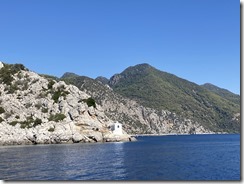
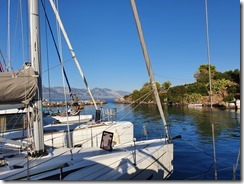
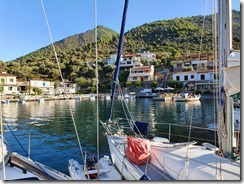

The following day we left Vathi onroute to Epidavros. We had been told of a ‘sunken city’ and hoped that we would be able to find it. The Sunken City is located in the bay of Agios Vlasios on the beach just outside Epidavos and only 2 meters from the shore in 2 meters of water. We anchored Money Penny at a safe distance from where we could see a few people snorkelling, launched the paddleboard and headed into the water. The water was crystal clear and there were large pots, walls,paved sections and foundations of buildings clearly visible. We paddle boarded and snorkelled around the exciting area. A fantastic experience that we were happy not to have missed. Having spent the afternoon experiencing this wonderful place, we made our way in to the harbour area of Epidavros.
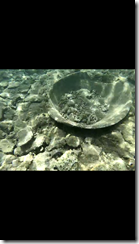
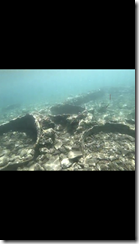
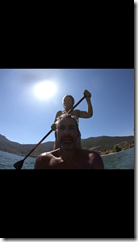
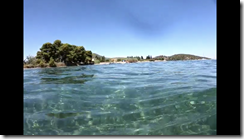
We anchored in the bay off Epidavros and enjoyed an evening swim before taking a trip in to explore the town. We checked the bus times for the following day to take us up to visit the nearby Theatre. Epidavros was believed to be the birthplace of Apollo’s son Asclepius the healer, the area was known for its sanctuary situated about five miles from the town as well as its theatre. The sanctuary was the most celebrated healing centre of the Classical world. The great theatre of Epidavros was built in the 4th century BC. It originally had 34 rows but these were extended in Roman times by an extra 21, seating 14,000 people and still used today. We took a small minibus the five miles to the Theatre, sharing our experience with crew from two other yachts. On our arrival we were the only people to enter the complex and felt privileged. We could only imagine the crowds that would normally have flocked here prior to Covid. There were huge car parks and facilities at the entrance and a number of closed cafes. We walked through the wooded area to the spectacular Theatre. The acoustics were amazing, if you stood in the centre of the stage area and whispered, anyone right at the back/top seats could hear you clearly. I climbed to the top and Alistair stood on the ‘spot’ and started to sing. Within a couple of seconds an official appeared from the trees and reprimanded him. Apparently there is a ‘no singing policy’, not even in Welsh!!
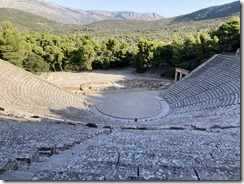
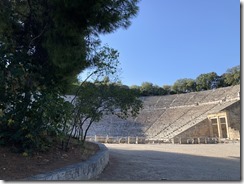
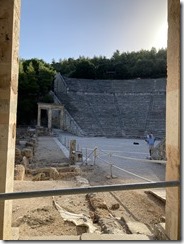
In the same complex is the Archaeological Museum, noted for its reconstructions of temples and columns. This museum houses a display of artefacts unearthed in the site and surrounding area. It was fascinating to see these artefacts so beautifully reconstructed.
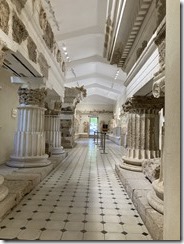
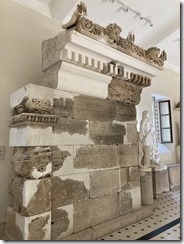
On the 9th September we departed the anchorage of Epidavros and headed out towards the epic Corinth Canal. The Canal connects the Gulf of Corinth in the Ionian Sea with the Saronic Gulf in the Aegean Sea. It cuts through the narrow Isthmus of Corinth and separates the Peloponnese from the Greek mainland. It was dug through the isthmus at sea level and has no locks. Construction first began in 1881 and the maximum boat draft is 24ft (7.3m). The Isthmus was first crossed by boats in 600bc when a ship railway was built and small boats were carried on wheeled cradles running in grooves. The Canal is 3.9 miles long (6,343 metres) and the earth cliffs reach a maximum height of 206 feet (63 metres).
As we sailed towards the Canal we were in the company of another yacht, Anastasia, belonging to Alex & Kuni, a German couple who we had spent the day at the Theatre with the day before. We excitedly moored on the Quay at the entrance and Alistair headed to the office with our paperwork and credit card! It was 216 Euros for us to cross the Canal but well worth it for the experience and also it would cut 185 miles off the return journey around the Peloponnese to the Ionian. The payment office is only at one end so if we had been entering from the opposite side, we would be paying on exit.

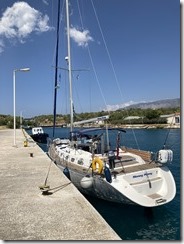
The crossing of the Canal was spectacular with added excitement of a bungee jumper launching off a bridge as we passed under! Alex & Kuni followed us in and were able to take a photograph of Money Penny as she made her way through.
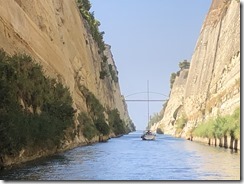
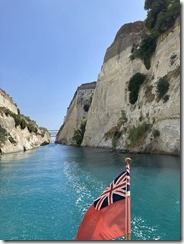
Having left a fairly calm sea as we entered, we approached the exit and became away of huge waves breaking ahead of us. To this day we are shocked that none of the staff at the payment office made us aware of the extreme weather ahead. Had we known what was to welcome us, we would have remained the other side until the following day!
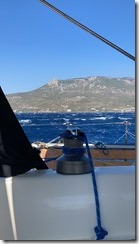
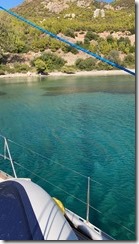
It took us nearly 2 hours to cover the 3 miles across the bay in 45 knots of wind and we were grateful that our anchor set first time in the shelter of the lee of the land. We were exhausted but relieved to be able to relax once again. Anastasia joined us a short while afterwards but was unable to set their anchor so moved on to a bay further up the coast. We swam in the clear water and then having eaten, retired early having first set our anchor alarm. At 6.30 am the alarm sounded and it was all systems ‘go’ as we had swung around into a shallow area. We decided to make an early start on the next part of our journey.